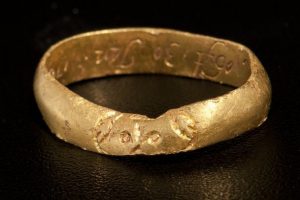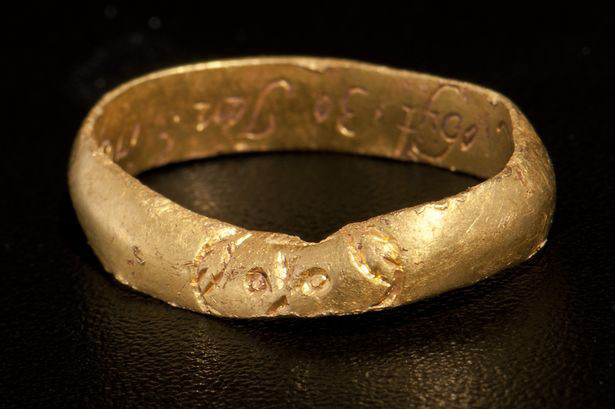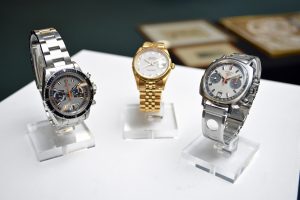 TREASURE hunters from the Pembrokeshire Prospectors Society, Kevin Higgs and Phil Jenkins, have discovered late medieval and Renaissance gold and silver rings. While using a metal detector, Kevin Higgs discovered a late medieval ring in Pembroke in 2014. Dating back to the 14th century, the ring is of part-hollow construction, with a hexagonal bezel set with a small uncut (cabochon) blue sapphire.
TREASURE hunters from the Pembrokeshire Prospectors Society, Kevin Higgs and Phil Jenkins, have discovered late medieval and Renaissance gold and silver rings. While using a metal detector, Kevin Higgs discovered a late medieval ring in Pembroke in 2014. Dating back to the 14th century, the ring is of part-hollow construction, with a hexagonal bezel set with a small uncut (cabochon) blue sapphire.
Milford Haven Maritime and Heritage Museum has expressed their interest in acquiring the ring for their collection. A silver-gilt posy-ring finger ring was also found at Carew by Mr Higgs while he was metal detecting in June, the year previously. Narberth Museum have said that they wish to acquire the item. Another Pembrokeshire Prospectors Society member, Phil Jenkins, found a silver gilt fede (faith) ring in Lamphey in October 2013.
The outside of the hoop had a late medieval inscription reading: ‘jaspar: melchior: baltazar’ in a mixture of upper and lower case crude black letter script. This legend invokes the names of the magi, or Three Kings, supposed to be especially effective against falling sickness and fever. Tenby Museum have expressed their desire in acquiring the faith rings. In December 2014, Mr Jenkins also found a gold religious finger ring, engraved with an image of St Catherine holding a sword, in Llandissilio.
A symbol of her martyrdom, a wheel, protrudes from St Catherine’s left side. The hoop is decorated on the shoulders and sides with sprigs and the inside of the hoop bears the legend ‘•en•boen•eure•’ (‘In Good Year’) in late medieval Black Letter script. According to Dr Redknap, such iconographic rings can bear one or more Christian figures or scenes engraved on the bezel, such as the Annunciation with Angel on one panel and Mary on a second panel. Common legends are de bon cuer (‘Be of good heart’) and en boen an.
The discoveries were first reported to the co-ordinator of the Portable Antiquities Scheme in Wales (PAS Cymru), Mark Lodwick, and subsequently reported on by Dr Mark Redknap, who is head of Collections & Research in the Department of History & Archaeology at the National Museum Wales. Dr Redknap said: “These cases provide an intimate insight into fashions and personal devotion circulating in Wales in the later medieval and early modern periods.
“These are significant additions to the growing database of treasure cases from Wales, and will enrich existing collections at the local museums in Tenby, Narberth and Milford Haven who can acquire the artefacts through funds via the Saving Treasures, Telling Stories project funded by the Heritage Lottery Fund. “Visitors to National Museum Cardiff this year can also see fantastic Welsh treasures alongside extraordinary treasures from all over the world in our exciting exhibition Treasures: Adventures in Archaeology which is on until October.”
















Add Comment